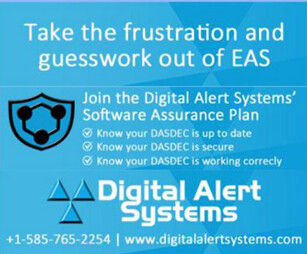Random, Spot Inspections Are Back

[April 2022] For a lot of folks, there are few moments as anxiety-filled as when a visitor shows his or her badge and announces “I’m from the FCC.” Your station(s) may well be inspected.
This week, the FCC Enforcement Bureau (EB) told the field offices that they were able to go out and do unannounced, random spot inspections.
For the past two years, even the relatively few station inspections in recent years were halted, with Field Agents told not to go out unless there was a critical matter of interference. As with the Law of Entropy, life in general gets disorganized – in our industry exhibited by less and less compliance with the Rules and station authorizations.
Enforcement staff that has been kept off the road during the pandemic, are now getting ready to spread out and visit stations – some of which not have been inspected in years.
Should stations be worried?
THE POINT OF INSPECTIONS
If your station(s) pay attention and work to comply with the Rules and your authorization(s), a visit by the FCC Field Agents will likely be quick and painless.
The FCC used to have Self Inspection Checklists. The ones on the FCC site are now 20 years old and out of date (see link below). Nevertheless, by carefully reading the checklists and noting the aspects that relate to the transmission chain and plant, you will have covered everything for which the Field Agents will look.
In fact, they prefer it that way. Broadcast is only one of many responsibilities the FCC is charged with overseeing. The ABIP (Alternate Broadcast Inspection Program) was created largely to reduce the need for inspections in the broadcast industry. Often, when a Field Agent visits a station and is shown an ABIP certificate, it is like having shields, the Agent will wish the station a good day, and leave.
But not always.
WHY INSPECTIONS OCCUR
There are several reasons why a station can be inspected, even with an ABIP certificate.
The most obvious cases are in response to reports of interference, especially if they involve Air Traffic Control frequencies. Other forms of interference or non-compliant operation reported to the FCC can also spark an inspection. And as it turns out, many of these legitimate complaints come from unpaid former employees.
In such cases, the ABIP certificate is not a shield against inspection. In other words, if there is a complaint, the FCC can and will inspect regardless of ABIP.
WHEN CAN THEY INSPECT?
Basically, if a station is on the air, by law it is available for an inspection.
One way to have an unpleasant experience is to try to tell the inspector no one is available to help them and they should come back later or on another day. That simply does not work, and can, in of itself, generate a fine.
Station personnel should know what to do if a Field Agent arrives. The Chief Operator should be immediately available. If the Chief Operator is not available (perhaps illness, perhaps vacation) it is important to have someone competent on operation matters available to cover.
Again, if you are operating, you are respectable.
WHAT DO THEY LOOK FOR?
One change from recent years, now that the Public Information Files are online, is that the focus of most inspections will be the program chain and especially the transmission facilities.
As has often been written, the top inspection item for the EB Field Agents relating to broadcasters is the EAS logs. Because of the public safety nexus, this includes monitoring the right assignments/sources according to the local plan, the reception and logging of the weekly tests and actual alerts, written explanations of problems, and the review by the Chief Operator (except with LPFMs) of the log each week.
Do not be tempted to just enter random information – your logs may well be compared against the local EAS LP stations’ logs for accuracy!

Additionally, stations that have tower lights will be checked to ensure there was a daily inspection for proper operation, unless sufficient automated monitoring is in place.
For those stations that are not keeping their logs up to date, it may be of value to note that typically an in-person visit to check logs is not necessary: the Regional Office may ask for copies of 90 days’ log to be sent via email. How this is handled may dictate further inspection activity. For example, when a station “says” they have fixed a problem, a surprise visit may be initiated to check and be sure.
ANYTHING ELSE?
Among the more common items that the inspections look for include remote control systems, the condition of the tower fencing, and the condition of tower paint.
When conducting investigations into transmitters and translators with spurs interfering with FAA frequencies, the Agents too often find those stations cannot remotely turn off immediately, as required. Sometimes this is due to a malfunctioning remote control system, while other issues relate to FCC inquiries being hindered by out-of-date contact information.
By the way, size has no bearing upon whether the EB Field Agents select a station for inspection. As it turns out, LPFMs were becoming a special focus because they often have little or no professional guidance in their operations.
For example, here is one that mostly affects LPFMs, which are often packed pretty tightly in producing local coverage: if a station is not operating from the coordinates specified in the station authorization for over 12 months, it can lose its license under the 312(g) regulation just as if it were actually off the air for those 12+ months..
– – –
The Self Inspection Checklists are outdated, but if you want to find one, click here.
– – –
